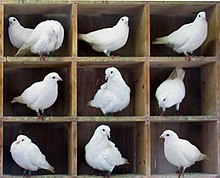From what we learned from the section on "Electromagnetism", we know that: 1) a changing electric field should create a magnetic field, and 2) a changing magnetic field can create an electric field.
An electromagnetic wave is a combination of electric and magnetic fields that vibrate together in space and time in a synchronous fashion and propagate through space (even vacuum) at the speed of light.
The electromagnetic wave is a transverse wave.
The electric and magnetic fields oscillate in the direction perpendicular to the direction of propagation.
The EM wave propagates because the electric field recreates the magnetic field and the magnetic field recreates the electric field.
Electromagnetic waves also experience the Doppler effect. As with sound, motion towards corresponds to a frequency shift upward and a wavelength shift downward, and motion away corresponds to a frequency shift downward and wavelength shift upward (the so-called red-shift).
For example, suppose we observed the light from a distant galaxy is received on Earth with a wavelength of 650nm. But it is known that the wavelength of this light upon emission was 625nm. Then we should know that this galaxy is receding from Earth.
Light is an electromagnetic wave –has both electric and magnetic parts and does not require a medium. A medium is any physical substance through which energy can be transferred. There are different types of electromagnetic waves, depending on their frequency levels and energy levels. Electromagnetic waves are formed when an electric field (shown as blue arrows) couples with a magnetic field (shown as red arrows). The magnetic and electric fields of an electromagnetic wave are perpendicular to each other and to the direction of the wave. Electromagnetic Waves have different wavelengths. When you listen to the radio, watch TV, or cook dinner in a microwave oven, you are using electromagnetic waves. Radio waves, television waves, and microwaves are all types of electromagnetic waves. They differ from each other in wavelength. Wavelength is the distance between one wave crest to the next. More...

Volume of cube = s3 where s is the length of any edge of the cube.
The gas theory works on the following assumptions:
The ideal gas law can be explained with the equation: More...
Virtual Image is an image formed by light coming from an apparent light source; light is not coming from the actual image location (actual light source).

 In mathematics, the pigeonhole principle states that if n items are put into m containers, with n > m, then at least one container must contain more than one item. Here there are n = 10 pigeons in m = 9 holes. Since 10 is greater than 9, the pigeonhole principle says that at least one hole has more than one pigeon. More...
In mathematics, the pigeonhole principle states that if n items are put into m containers, with n > m, then at least one container must contain more than one item. Here there are n = 10 pigeons in m = 9 holes. Since 10 is greater than 9, the pigeonhole principle says that at least one hole has more than one pigeon. More...
Solving Math problems can be interesting with online learning sessions. Students can take these sessions based on their learning requirements and most importantly, they can schedule these sessions by staying at their home. It saves their time and gives personalized attention to students. They can work with proficient subject experts and solve tough Math problems in a virtual environment. It has been observed that most students face difficulties while solving Math problems and to tackle this situation, students need to revise each Math chapter in a thorough manner. Moreover, they can solve online Math questions, as well. More...
Multiplication Principle states: If an event occurs in m ways and another event occurs independently in n ways, then the two events can occur in m × n ways.
Example of Multiplication Principle
A pizza corner sells pizza in 3 sizes with 3 different toppings. If Bob wants to pick one pizza with one topping, there is a possibility of 9 combinations as the total number of outcomes is equal to number of sizes of pizza × Number of different toppings. More...
The following 2 statements are logically equivalent:
Consider the following example:
There are 5 cat cards, 4 dog cards, and 1 rabbit card on the table. They belong to Tim or Sam. More...
A quadratic equation looks like this:
ax² + bx + c = 0 (where 'a' cannot be zero.)
Solving the equation means finding ‘x’ values that make the equation true. These ‘x’ values are called the roots of the quadratic.
Quadratic equations can have 0, 1 or two roots.
The quadratic formula is derived from the general quadratic equation (below) by completing the square. More...
Suppose you have 2 lines: l and k. If l and k are perpendicular to each other, then the slope of perpendicular line k is the negative reciprocal of the slope of line l, ie Slopek = -1/Slopel
The following shows you how to determine the slope of a line and the slope of its perpendicular line: More...